The shrinking world of Ghurni clay dolls
Ghurni has served as a pillar to the art and cultural firmament of West Bengal. Its matir putuls (clay dolls) are world famous. But the dolls are losing sheen and traditional artisans being relegated to history. As they vote today in the West Bengal Assembly Elections, these artisans hope the new government will revive the clay craft.

Ghurni, West Bengal
They are just two or three inches in height but narrate a story or depict vignettes of rural life — women cutting vegetables, musicians playing the ektara, Santhals (tribal people) dancing with dolls, priests offering prayers, beautifully dressed brides and grooms, animals, insects and birds…
Welcome to the artistic world of ‘matir putuls’ (clay dolls) of Ghurni that dates back to the reign of Maharaja Krishnachandra (1710-1783), but has also kept up with the present times to feature cricketers, movie stars and popular comic strip characters.
Pradip Pal has been selling these ubiquitous clay dolls of Ghurni in the Krishnanagar putul patti (doll market) for some years now. The 55-year-old has earned good profits over the years and managed to save for his old age. About 300 traditional doll makers and labourers live and work in Krishnanagar, about 100 kilometres from Kolkata, the state capital.
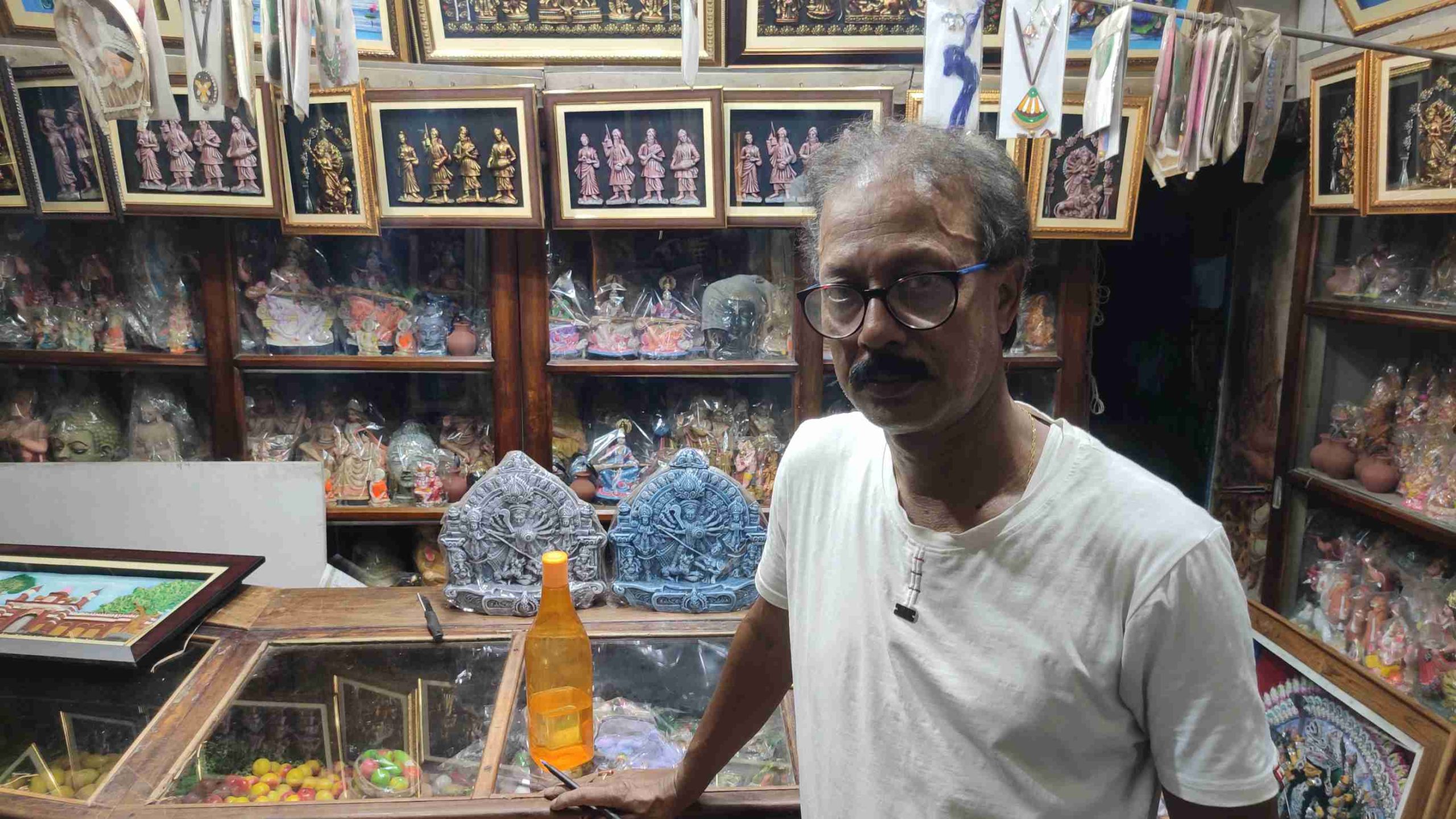
But, the putuls are losing buyers and a traditional craft is fast losing its sheen.
“We hardly get buyers now. The situation has undergone a complete change in the past two decades,” Pradip told Gaon Connection. “Some artisans make dolls from inferior material and sell them as Ghurni dolls in fairs and exhibitions. These dolls lose their sheen in a few days, and bring disrepute to even genuine clay doll makers. Unless this stops, our craft and its practitioners would be confined to history books,” rued Pradip.
Also Read: West Bengal Assembly Elections 2021: Weavers wrapped up in gloom
Krishnanagar, of which Ghurni is a vital part, goes to the polls today, April 22. The Bharatiya Janata Party (BJP), which is seeking to wrest power from the ruling Trinamool Congress (TMC), has fielded heavyweight candidate Mukul Roy against Tollywood actress Koushani Mukherjee of the TMC in the West Bengal Assembly Elections.
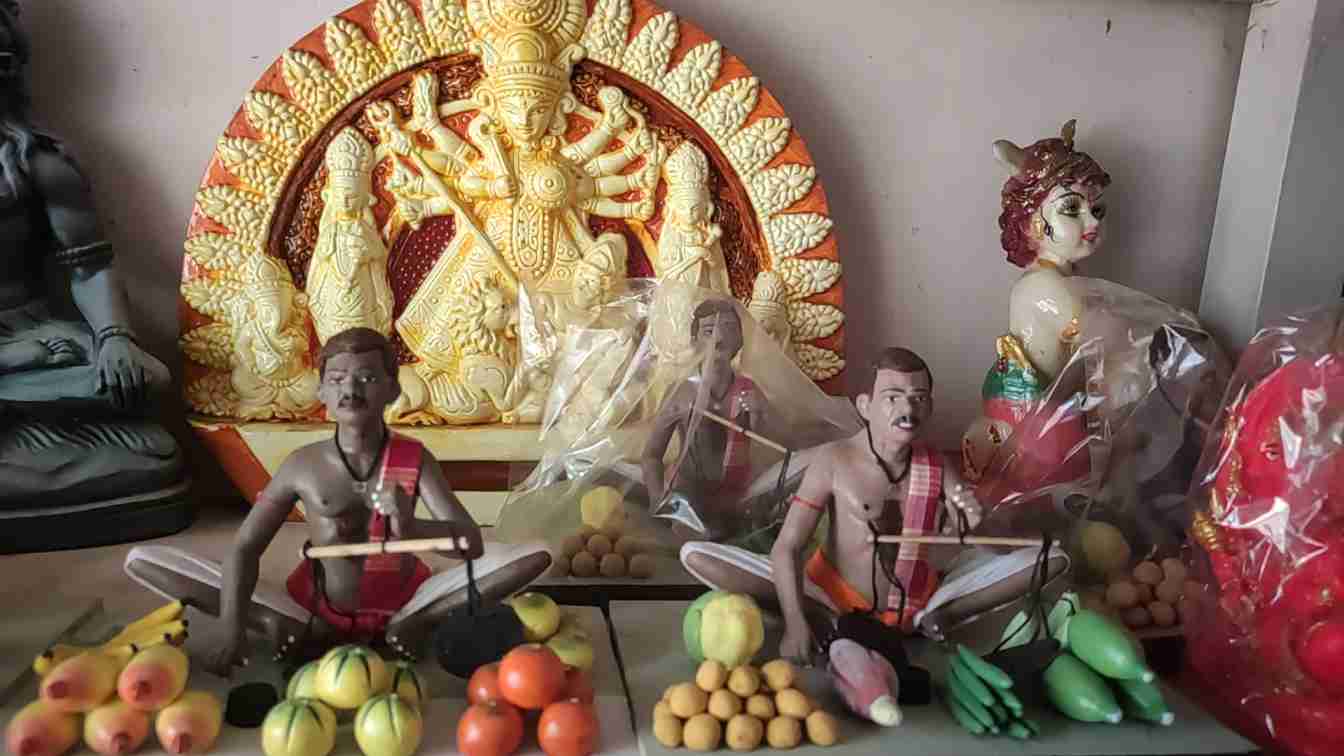
History of clay dolls
Ghurni in Nadia district has always served as a pillar to the art and cultural firmament of West Bengal.
The clay dolls of Krishnanagar have a glorious past, dating back to the reign of Maharaja Krishnachandra (1710-1783), who helped the British East India Company against Siraj ud-Daulah in the Battle of Plassey in 1757.
Maharaja Krishnachandra was a patron of the arts, including literature and music, and supported the production of clay dolls. In 1728, he brought families of potters from Dhaka and Natore in present-day Bangladesh, and settled them in Ghurni, then a village. Since then, the artisans have been living here and making clay dolls, toys and even sculptures.
What makes the dolls unique
Ghurni clay dolls are strikingly real and boast a fine finish. They represent a remarkable breakaway from traditional clay work. Yet, some aspects are rooted in age-old techniques. Like with traditional work, the doll makers use tiny iron rods to provide the skeletal structure, and then work with delicate tools to craft the clay. The dolls are then baked in a kiln, given a final coat of varnish, painted, and then dressed up in fine garments.
Also Read: Govt support boosts Varanasi’s wooden toy industry but workers’ woes remain
Earlier, the dolls were made from clay sourced from the banks of the river Jalangi. Now, the artisans use soil from agricultural fields, because of restrictions on lifting soil from river banks.
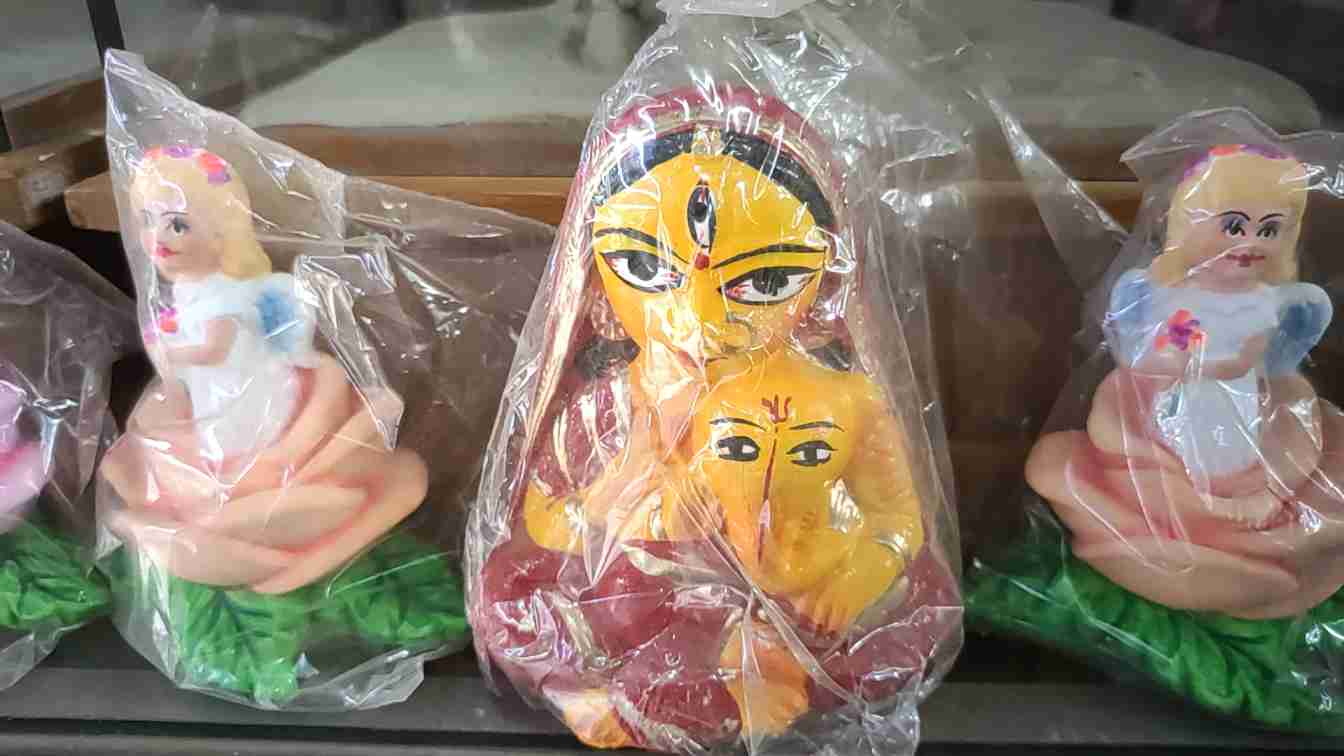
They claim the future doesn’t hold much promise, as the demand for Ghurni dolls has been decreasing every passing day. “We do not get many orders from wholesalers, and even the retail market is not very encouraging,” said 51-year-old Mantu Pal, an artisan.
“The prices of raw material have gone up but the dolls are still being sold at the old price, because people don’t want to pay the right price. The pandemic-induced lockdown has made the situation worse. We might all fade away into oblivion,” Mantu told Gaon Connection.
Also Read: The boatmakers of Balagarh and the changing tides of time
Need for institutional training
Apart from the cheap version of dolls that ruin Ghurni’s reputation, artisans also lay some of the blame on lack of training institutions for the dwindling art form.
“The young generation has no interest in the art because there is no training institution or any art college here, despite Krishnanagar bringing worldwide fame to the state with its dolls,” 51-year-old Subir Pal, a renowned artisan, told Gaon Connection. “There is no museum that can inspire youth. We have made several appeals to the administration to build an institution dedicated to Ghurni, but nothing has worked out.”
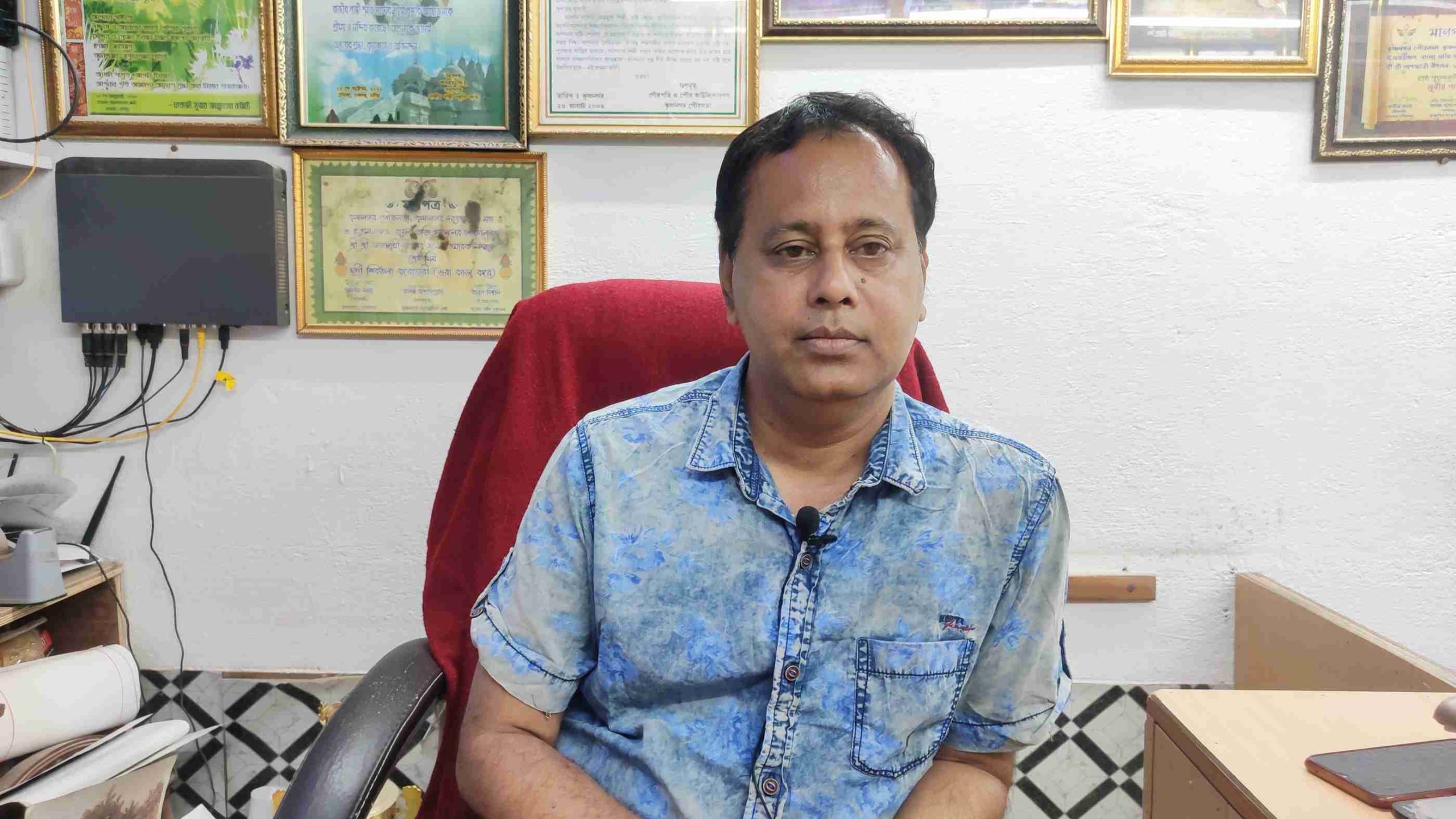
Also Read: Mirzapur toys narrate a story of neglect
Subir accused the state government of doing nothing to promote Ghurni as a tourism spot. “Ghurni is just three kilometres from the Krishnanagar railway station, but there are no murals along the way to introduce people to the art. The government can beautify the stretch with Ghurni idols to attract tourists,” he said.
“We have seen our elders shape beautiful clay dolls and learned the art by watching them, but outsiders who want to learn the craft need an institution. The government should build an art college where the exhibits of our ancestors’ creations can inspire youth,” Saheli Pal told Gaon Connection. A resident of Ghurni, Saheli is a Guinness World Records holder for the largest matchstick mosaic of the Taj Mahal.
Since it is the election season in the state, politicians are quick to show their concern towards the clay putuls of Ghurni.
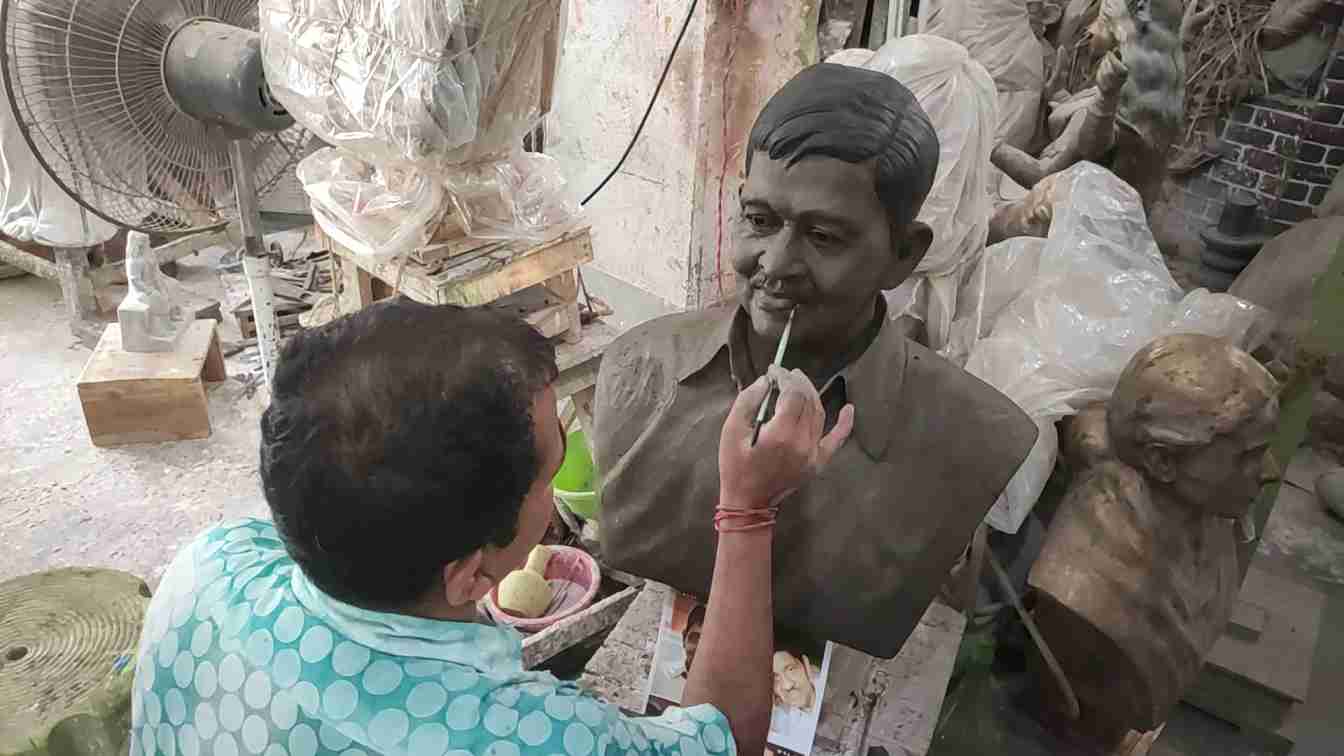
“The state government is equally concerned about Ghurni artisans. We had tried to relocate them in a bigger area but they refused to go. The government has been also providing them with a monthly pension of thousand rupees. We have more plans if we return to power for the third time,” said Dilip Biswas, a TMC leader.
The BJP, however, blamed the TMC for doing nothing despite persistent appeals. “We have submitted several representations to the local administration to offer a minimum wage for the artisans and to facilitate easy loans, but they’ve done nothing. Their uplift will be our priority if voted to power,” said Biltu Pandit, a local BJP leader.
Will the clay putuls of Ghurni survive the shifting sands of time?

